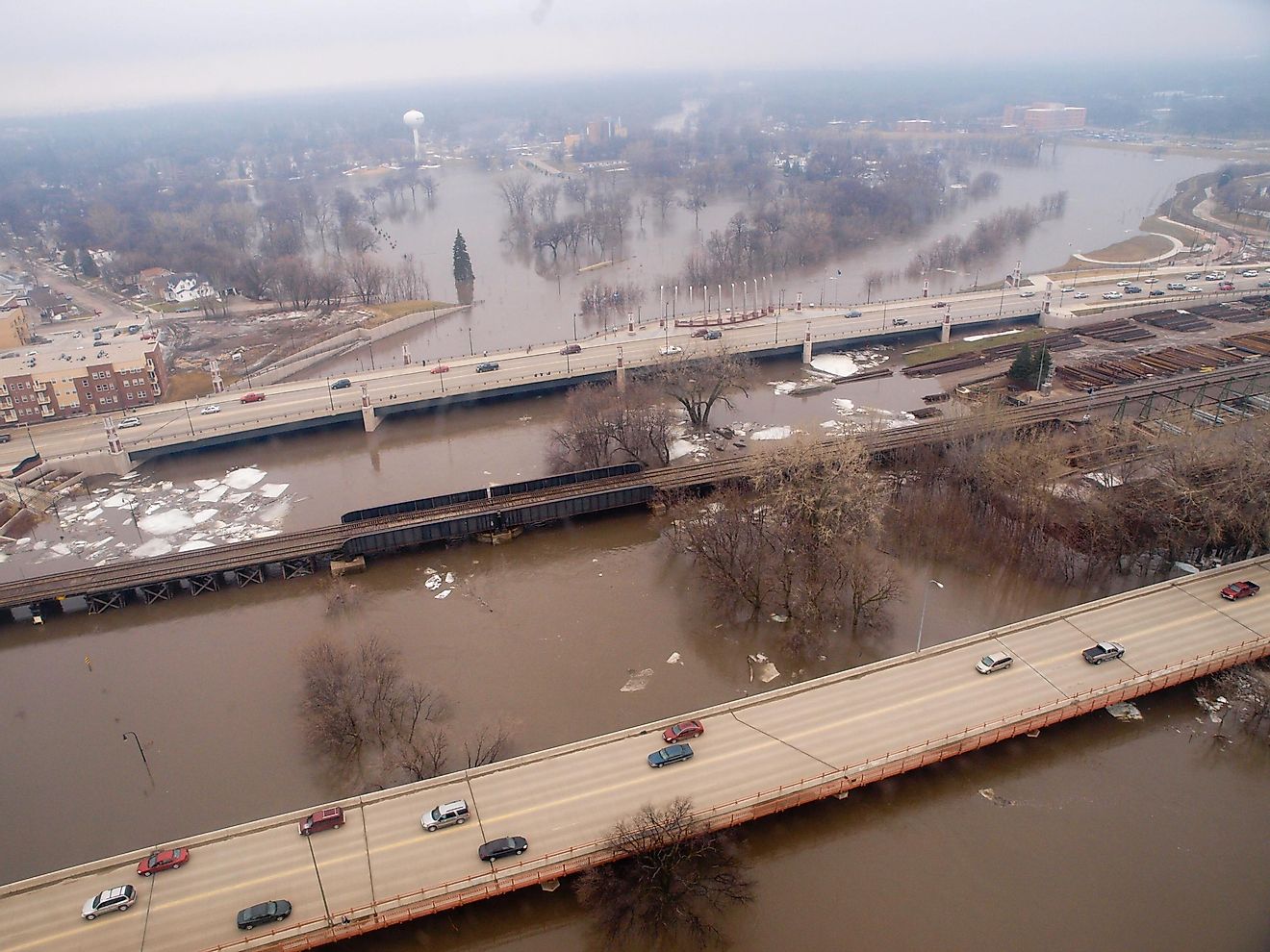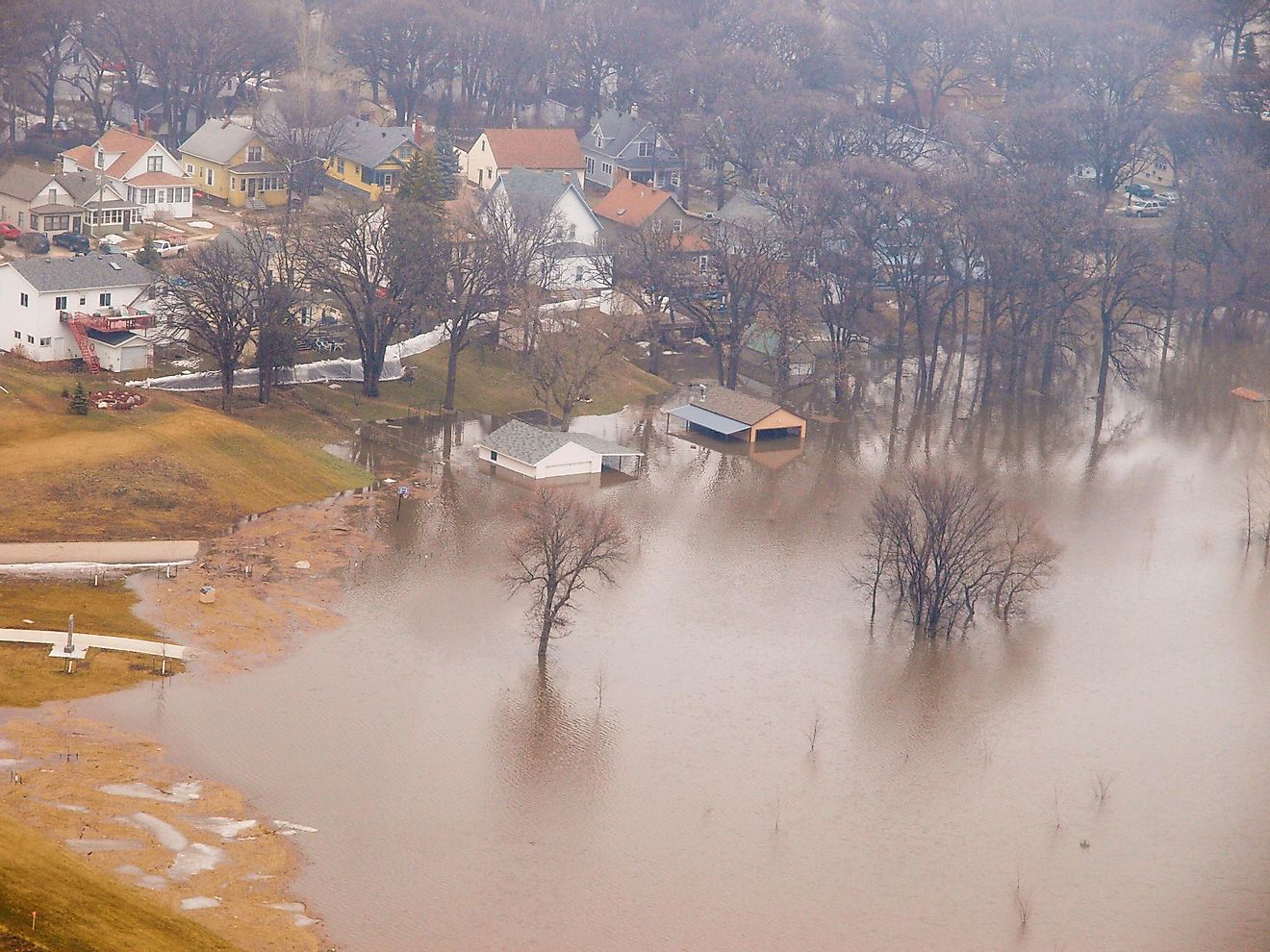The Red River Of The North (Riviere Rouge Du Nord)

5. Description
The Rivière Rouge du Nord or the Red River of the North covers 550 miles from Wahpeton, North Dakota to Manitoba's Lake Winnipeg. The Red River is infamous for its floods that occur during spring and summer rain. At best of times, the river is easy to navigate with its slow current caused by its average slope of only half a foot per mile. However, access to the river is hindered by its muddy banks. The average width of the Red River of the North is less than 100 feet, but it gains width to 500 feet in its northern portions. Its visibility (depth of river clearly visible from surface) is increased from 12” to 18” in winter but decreases to 2” in summer. It has naturally dark water caused by its clay soil which makes navigating it difficult especially during low tide.
4. Historical Role
Throughout its history, the Red River of the North has been flooding the communities along its banks. It has at various times compounded the problem with the huge floods of 1826, 1897, 1950, 1997, 2009, and 2011. These massive inundations are nicknamed as the “paleofloods” and cause significant changes to the area's landforms. These floods have become such a regular problem that the city of Winnipeg built a floodway to control these natural disasters. Similarly, Grand Forks also had a removable floodwall constructed to stop the waters from entering its area. Early historical records show that the Red River was an important route for trade. The Metis people and the fur traders exchanged goods along the Red River's banks by using its watershed streams. Early settlers of the Red River Colony also used the river for transporting goods.
3. Modern Significance
Today, the Red River of the North has influenced the development of many communities along its banks. Its floodways, floodwalls, locks, dams, and bridges help make its waters more manageable. Many modern businesses have replaced the fur traders and early establishments that have flourished in the past. Tourism has also contributed to the economies of the area's towns and cities'. The Red River of the North is associated with many other activities such as fishing for Channel catfish. Lockport is the oldest settlement in Canada and boasts of good fishing and also is an important tourist destination. Ice fishing and snowmobiling are two winter sports that visitors enjoy. Summer is the best time to see its many historical monuments and buildings.
2. Habitat and Biodiversity
The Red River has slow-moving muddy water that is perfect for many fish species. Walleye salmon, lake sturgeon, goldeye, mooneye, muskellunge, and northern pike are aplenty. There are also fresh-water drum, sauger, bullheads, carp, and smallmouth bass among its fish population. Anglers can enjoy its trophy-sized channel catfish. Hunters also come for the fall hunting season. Whitetail deer, rabbits, furbearers, turkeys, doves, squirrels, pheasants, and waterfowl also roam both sides of the river. The nature enthusiast can also enjoy the many scenic areas of the Red River by canoe or kayak. Birdwatchers have hundreds of birds to observe and photograph in the area.
1. Environmental Threats and Territorial Disputes

Spring and summer flooding has become a serious problem with the communities settled along the Red River of the North. Several cities have built floodways and floodwalls to redirect the huge annual floods that have inundated and damaged properties. A dam has also been built but obviously, these measures are not enough to stop the floods. The primary cause of the floodings is the draining and destruction of the wetlands that used to absorb up the flood waters. Agricultural lands have replaced these wetlands. The total damage of the 1997 flood reached $3.5 billion USD. It is not only the massive flooding events that are the concern of the communities in the Red River area but also the smaller floods that occur every year. These floods have caused damages amounting to $195 million USD as well.







